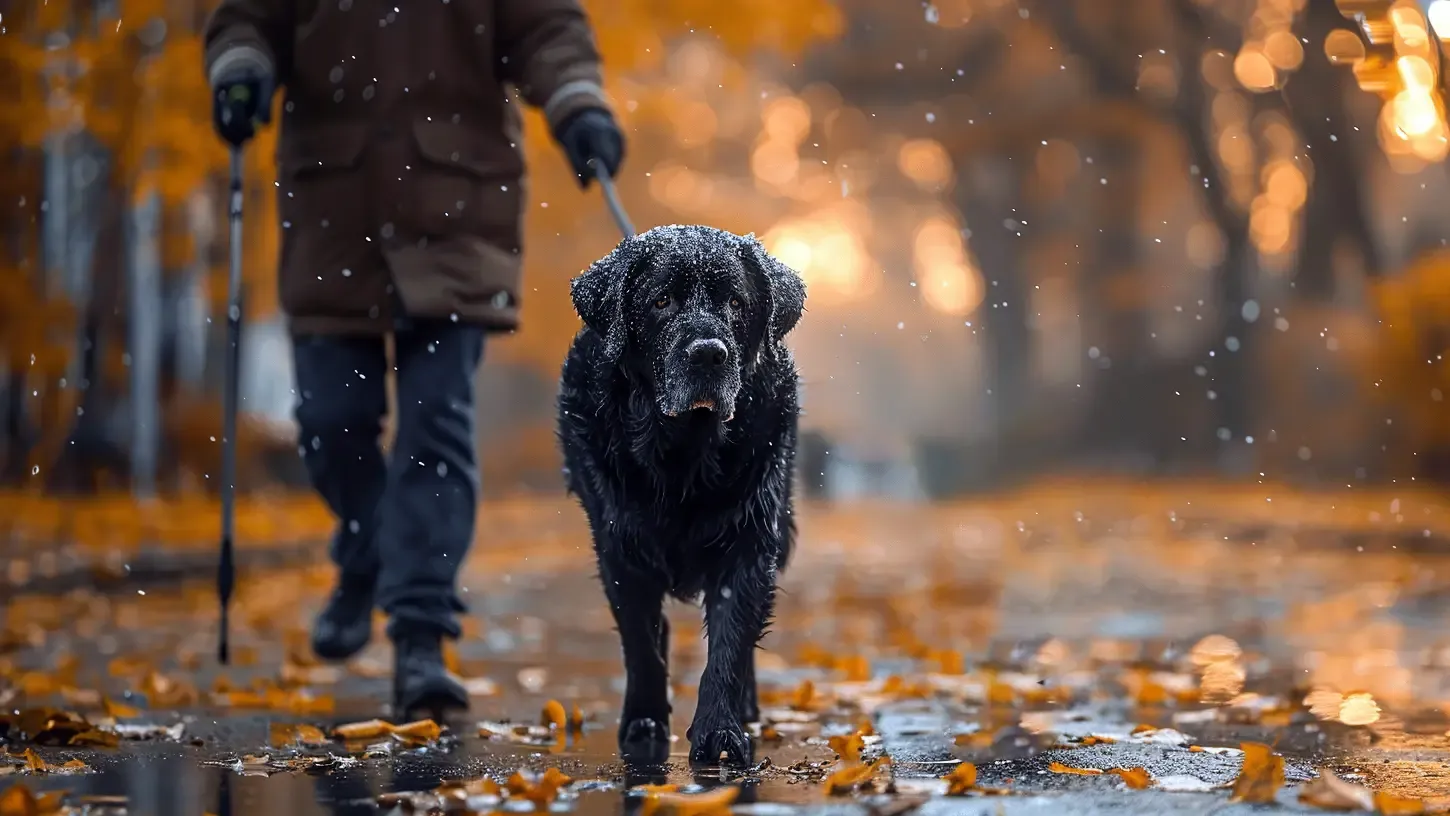17 February 2024
Navigating the World with Four Paws: The Essential Role of Guide Dogs.

Press the play button in the top right corner to listen to the article
In the intricate dance of human-canine partnership, guide dogs emerge as unsung heroes, guiding their visually impaired partners through the maze of modern life with astonishing grace and precision. These dogs are not just pets; they are highly trained professionals, offering their human companions independence, mobility, and the profound companionship only an animal can provide. This article delves into the breeds best suited for this noble role, the rigorous training they undergo, the costs involved, their invaluable services, and the etiquette we should all observe when encountering a guide dog team.
The Chosen Few: Breeds Fit for the Task
Not all dogs are cut out for the demanding role of a guide dog. The breeds most commonly chosen for this task include Labrador Retrievers, Golden Retrievers, and German Shepherds, prized for their intelligence, temperament, and work ethic. These breeds possess the essential qualities needed for guide work: adaptability, strong spatial awareness, and a calm demeanor. They are capable of navigating complex environments and making independent decisions for the safety of their handlers.
The Making of a Guide Dog: Training Time and Cost
The journey from playful puppy to dependable guide dog is a long and intensive one. Typically, it begins with basic obedience and socialization training in the puppy's first year, followed by more specialized training at a guide dog school, which can last between 4 to 6 months. The cost of raising and training a guide dog is substantial, often exceeding $50,000. However, guide dogs are usually provided at little to no cost to their handlers, thanks to the generous support of donors and non-profit organizations dedicated to this cause.
More Than Just a Helping Paw: Services of a Guide Dog
Guide dogs perform a myriad of services beyond leading their handlers around obstacles. They are trained to obey and ignore commands based on the safety of the situation, find doors, stairs, and elevators, and even lead their handlers to specific locations on command. Importantly, they provide an unparalleled level of emotional support, becoming a trusted companion who is there through the challenges and triumphs of everyday life.
Meeting a Guide Dog Team: What You Need to Know
When you encounter a person with a guide dog, it's crucial to respect their working relationship. Always speak to the handler, not the dog, and ask permission before interacting with the canine. Do not distract the dog with food, noises, or physical contact; their attention must remain on their job. Recognize that the guide dog is not a pet but a working animal providing an essential service to its handler.
In conclusion, guide dogs play a vital role in the lives of those they assist, offering not just physical guidance but also emotional support and companionship. The journey to become a guide dog is rigorous and expensive, but the outcome is a partnership that enhances the lives of both the handler and the dog. By understanding and respecting these remarkable animals and their handlers, we can contribute to a more inclusive and navigable world for everyone.
The content, including articles, medical topics, and photographs, has been created exclusively using artificial intelligence (AI). While efforts are made for accuracy and relevance, we do not guarantee the completeness, timeliness, or validity of the content and assume no responsibility for any inaccuracies or omissions. Use of the content is at the user's own risk and is intended exclusively for informational purposes.
#botnews















































































